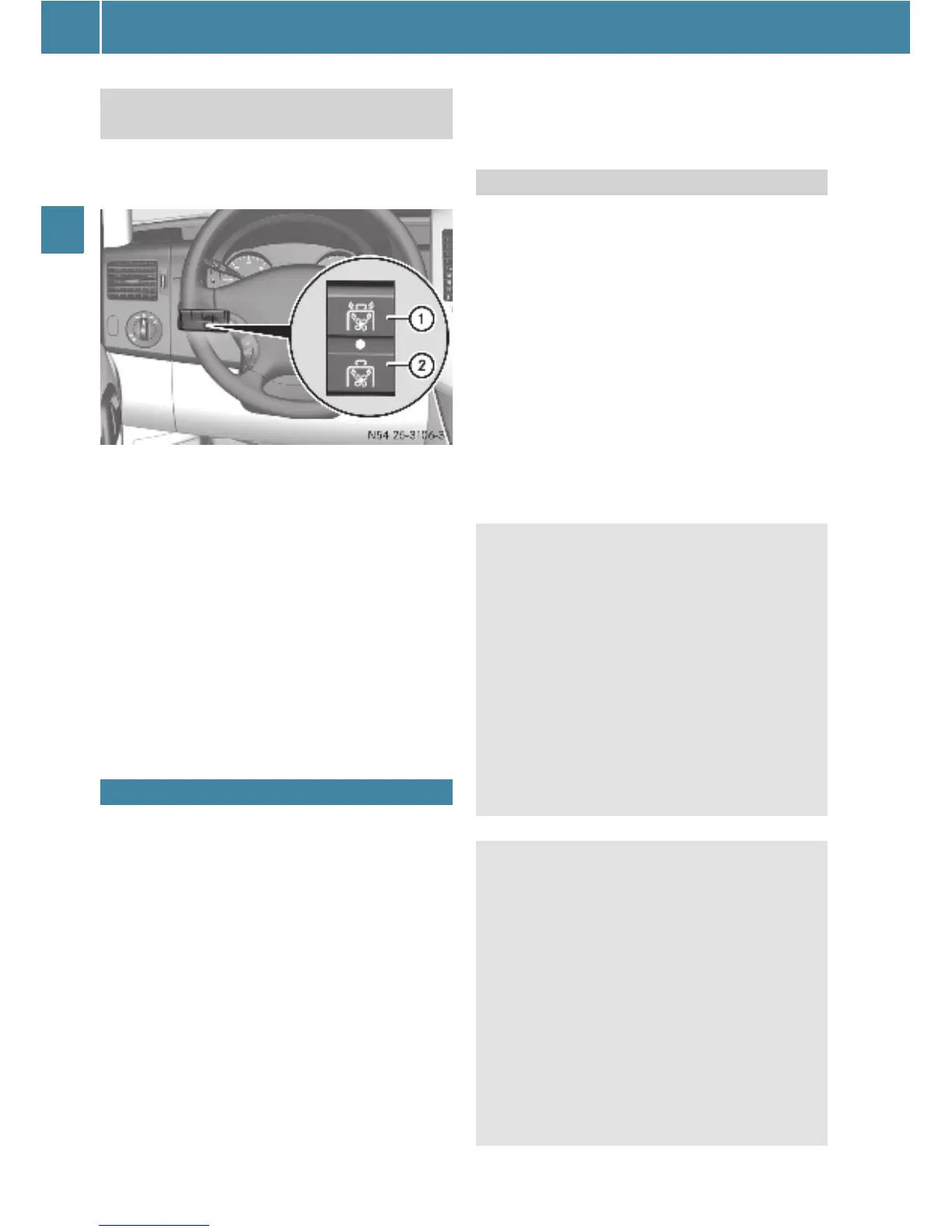Driving systems
122
Controls in detail
The roof ventilator can be used to ventilate
or remove air from the load compartment.
E Turn the key to position 2 in the igni-
tion lock.
E Air out: press upper part 1 of the
´ switch.
The roof ventilator removes used air
from the load compartment.
E Air in: press lower part 2 of the ·
switch.
The roof ventilator feeds fresh air into
the load compartment.
E To switch off: set the switch to the
center position.
Driving systems which may form part of
your vehicle are described on the following
pages:
O Cruise control (e page 122), which
you can use to control the speed of
your vehicle
O PARKTRONIC system (e page 124)
and Rear-view camera (e page 127),
which are an aid for parking and ma-
neuvering
O Reverse warning feature, which helps
you ensure the safety of other road us-
ers (e page 133)
The ABS, BAS, ESP
®
, ASR and EBV driving
safety systems are described in the "Driv-
ing Safety Systems" section (
e page 49).
Cruise control maintains the speed of the
vehicle for you.
Use cruise control if road and traffic condi-
tions make it appropriate to maintain a
steady speed for a prolonged period. You
can set any speed above 20 mph
(30 km/h) in 1-mph increments
(1-km/h increments).
i The increments for setting the speed and
the threshold values for switching on or automat-
ically switching off cruise control depend on the
digital speedometer setting, mph or km/h
(
e page 91).
Roof ventilator in the load
compartment
Driving systems
Cruise control
G Warning
The cruise control function cannot take ac-
count of road and traffic conditions.
Always pay attention to road and traffic
conditions, even when cruise control is acti-
vated.
Cruise control is only an aid designed to as-
sist driving. You are responsible for the vehi-
cle's speed and for braking in good time.
If there is a change of drivers, advise the new
driver of the cruising speed that is stored.
G Warning
Do not use cruise control:
O if road and traffic conditions do not per-
mit a constant driving speed to be main-
tained (e.g. heavy traffic or winding
roads). You could otherwise cause an ac-
cident.
O on slippery roads. The drive wheels may
lose their grip when braking or accelerat-
ing and the vehicle could skid
O when visibility is poor, e.g. in fog, heavy
rain or snow
